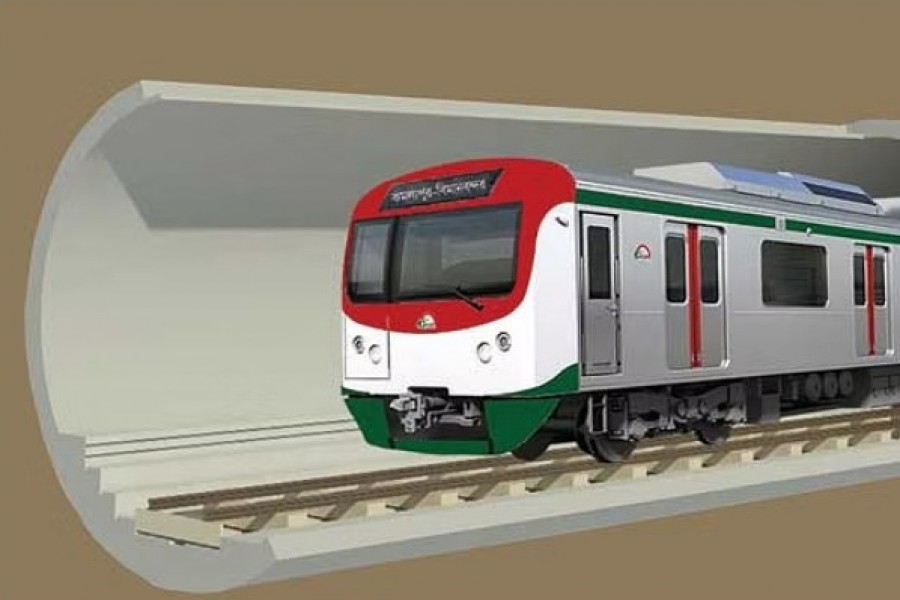Just over a month after the grand inauguration of Dhaka's Uttara-Agargaon elevated metro rail, a segment of the Uttara-Motijheel line, Bangladesh entered the age of underground metro rail on February 2. Prime Minister Sheikh Hasina opened the construction of the first-ever underground metro rail in the country on the day at Purbachal. The event was indeed another watershed in the city's communication sector. The segment of the underground line comprises the 20-km Airport-Kamalapur section. The other segment is an elevated one.
Outwardly, the Tk 525.61 billion rail project, to be completed by 2026, proposed for Dhaka appears to be complicated, testing the forbearance of the people living in the areas through which the rail tracks will be laid. During the preliminary work of constructing the Mass Rapid Transit (MRT) Line-6, the widespread expectations gave way to a fraught situation. It was prompted by the different types of digging and earth-filling work along the proposed lines. People's sufferings knew no bounds. In the case of the MRT Line-1, return of these hazards has been ruled out. It has been said that the 20km Airport-Kamalapur line would be quite sound-proof; and the underground construction work would not cause sufferings to the people living around. However, worries about the shifting of utility service lines remain. But the authorities say shifting of utility service lines will not be necessary thanks to the railway's construction works being undertaken some "10-20 metres under the ground". If materialised, this will be a relief for both the metro authorities and the utility service providers.
There are some major works that need to be completed before the start of the work in earnest. They include landfill, soil improvement, provisions for drainage channel, peripheral road construction, slope protection and settlement monitoring. Unlike those of the elevated metro rail, there are some unique imperatives which have to be addressed before the commencement of the underground metro railway work. At the same time, even if the metro tracks do not need any special route on the surface, its overhead stations do need large sheds. This will underscore the need for a piece of plot which has to be acquired. The task of land acquisition might also not be smooth at places.
With the complete launch of both the elevated and underground railways, Bangladesh is set to enter the new era of communication. Theoretically, the metro rail is free of many hazards that city dwellers face in the capital and the outskirts. The mass rapid transit might eventually enable the urban people to consign the scourge of traffic gridlock to the past. But in order to savour the fruits, the two types of metro rail set to operate in the Bangladesh capital ought to be free of all kinds of glitches. Moreover, a densely populated large city like Dhaka cannot bank on just two or three elevated or underground lines. The government has a grand plan about metro connections in the city. The Dhaka Mass Transit Company Limited (DMTCL) has plans to cover a large part of the capital with a metro rail network in the near future. Connectivity between the north and the south will define that network. As has been noticed in the large and developed capitals in the recent decades, the metros have been the main mode of communication.


